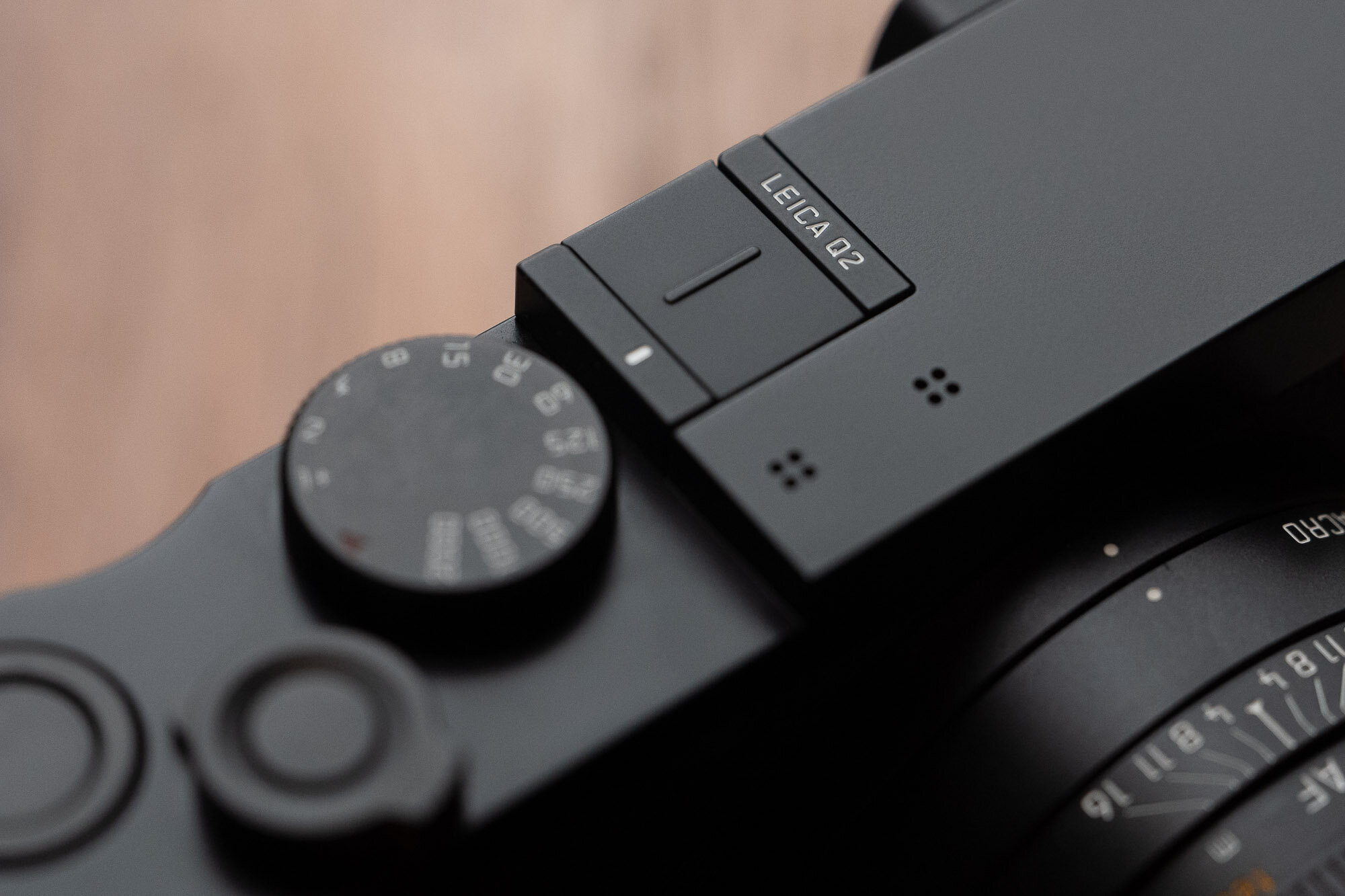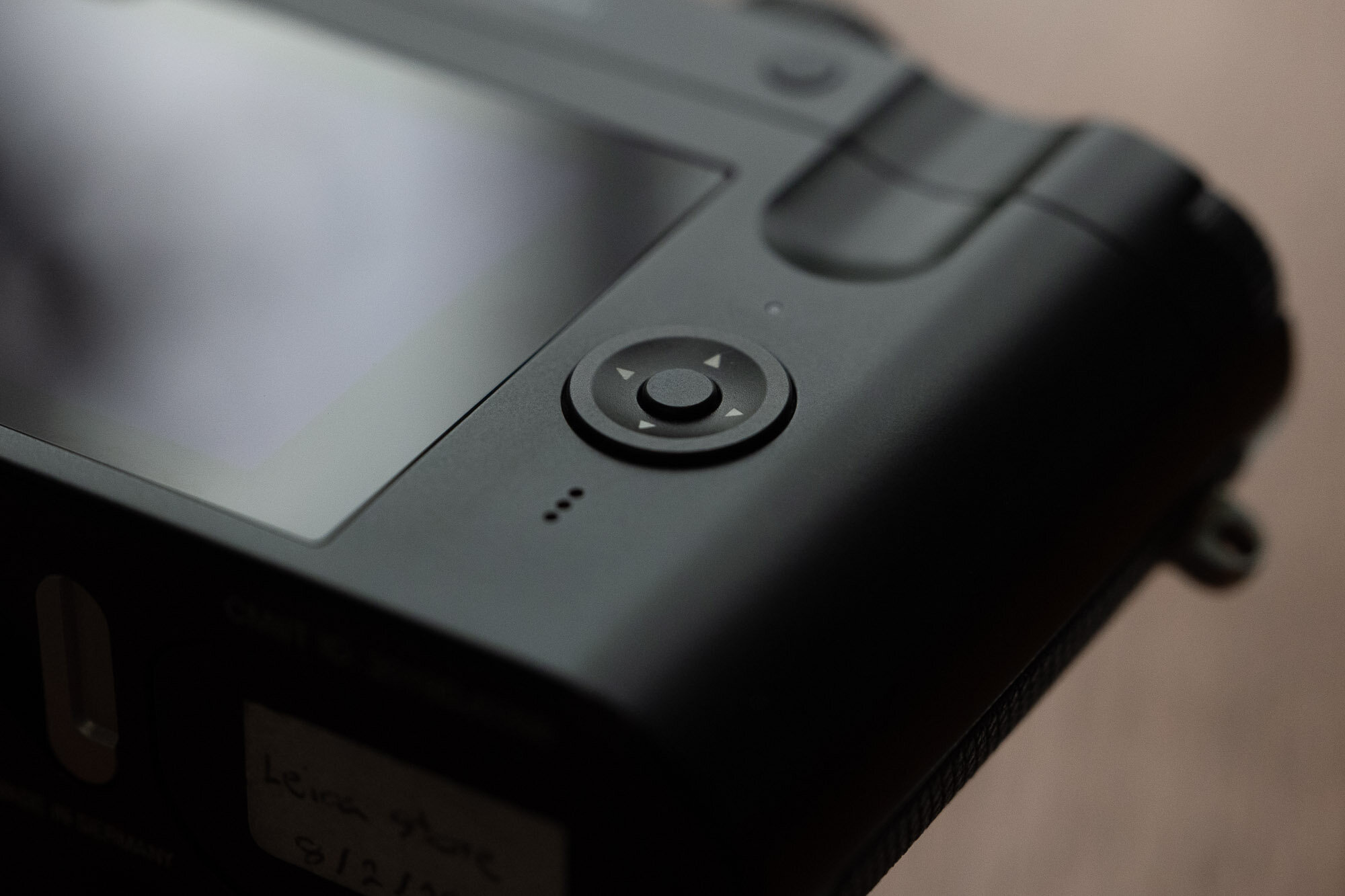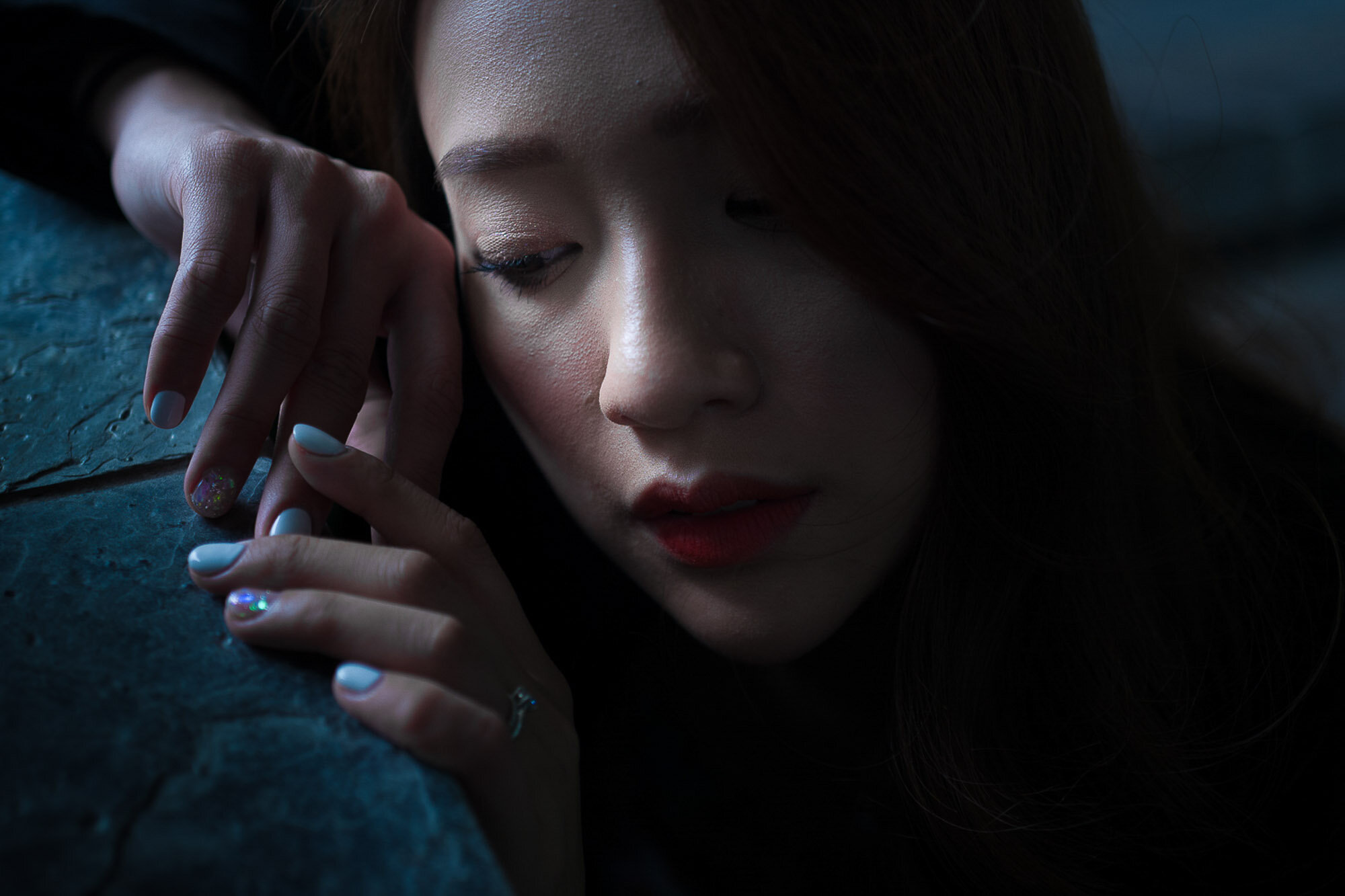The Leica Q2 is at least double the camera it was. No joke.
I remember writing the Leica Q review with much positivity and enthusiasm, as I felt it was an amazing camera for the (mostly male) traveller and street photographer. Well a lot has changed since then. The Leica Q has taken on a massive cult following and has certainly taken attention away from the legendary M line. But what does this all mean for the Leica M’s legacy, and the brand overall? Read on to find out my thoughts.
Background and the Leica Q’s Market Status
Of course, the Q’s design, features and status are derived from the legend of the Leica M design, but on certain levels it could be said that the Q has now become Leica’s modern ‘poster child’, and certainly in terms of demographics, the Leica Q has expanded Leica’s customer base by penetrating new segments within the luxury market. The most significant new segment is the female client, which in Bangkok, Thailand (where I previously lived), is a huge growing segment responsible for approximately 70% of Leica Q sales.
As a professional photographer, it has been interesting to see how Leica and other specialist brands have expanded or shifted into the luxury market. Many may argue that Leica has always existed in it; but I will argue that Leica only had their ‘toes’ in it. This is mostly due to their high price and high quality as a ‘legacy product’, rather than a tool used as part of the modern lifestyle, or a symbol of status among the ‘financial elite’. As a result, historically, Leica’s marketing efforts have mostly focused on photography, communicating their cameras as being ‘the ultimate tool for professionals’ – even though a majority of sales have been attributed to wealthy, keen amateur photographers with the desire to shoot with the ultimate professional tool. Using the world’s best photographers to promote has now shifted somewhat to the world’s most ‘influential content creators’, where reach into new markets has been an important goal for the German brand.
These days we have seen social media’s influence in shifting many brands to change their marketing strategies, and as a result, we now see Leica’s focus shift, resulting in having a ‘whole foot’ now in the luxury market – and this is where the Leica Q’s design and feature-set make it stand out as being ‘the camera to own’. Whether you’re shooting in a war zone, on the cliffs of Nepal, or in a luxury mall in Bangkok, the Leica Q is probably there. The Leica Q is literally ‘the Leica for anyone', and most importantly, at least in the city of Bangkok, if you own a nice luxury Hermes bag, there’s no better camera to pull out of it in front of your peers. The Q has truly become the world’s top luxury camera, and propelled Leica to the top of the luxury camera market, and it literally has no rivals in this demographic segment. The compact size, legacy looks, 28mm lens (equal to most smartphones), fast and accurate autofocus, sharp and realistic image quality, accurate colours, low light abilities, connectivity and visual status make it without peer, and distinctly a better performer than any smartphone or compact camera that fits in a small bag.
So what could Leica possibly do to better the Leica Q? The original Q seemed to do everything right with few weaknesses, and if you’re not familiar with the original and need to go over the basics, please read my Q review here.
In this article I will be focusing on the changes from the Leica Q to the Q2, and giving my overall thoughts on the performance, so here goes….
Design
So, enter the Leica Q, and my first impression is ‘Ah, isn’t that the Leica Q…1?’
I was hoping for, or expecting a design refresh until I realised that the Leica Q design really is terrific the way it is, and fits well within the Leica design philosophy ‘Das Wesentliche’ - the bare essentials. Non-Leica users may look at the design and argue that the ergonomics don’t mould to the hard as well as some other brand’s designs, whereas longer-time Leica users understand that this is the way Leica design has always been and for the most part it works well. With fewer buttons and a very simplistic layout, there is less to think about. There a clear and blatant design elements focus on design over ergonomics, and it’s hard to argue that the camera looks distinctly classic, and sticks to the same design principals of the first Leica’s of the early to mid 1900’s.
Why a 28mm fixed lens?
(Taken from Leica Q Review)
Leica’s decision to use a 28mm lens instead of a 35mm lens will probably be the first question people will have about this camera, and while I don’t have an official answer from Leica, please indulge my speculation. Firstly, the driving force for there 28mm focal length is the leaf shutter chosen for the Leica Q. The leaf shutter was the largest Leica could find, and this determined both the focal length and the widest aperture of the lens.
Secondly 28mm is a point of difference that makes this camera unique compared to the offerings by competitors in this segment of the market, where most cameras come with a 35mm f/2 lens. Additionally, the iPhone sports a focal length equivalent of around 28mm, which is the world’s most used camera/lens combination, not only by ‘average Joes’ taking happy snaps, but even by professional photographers like myself that enjoy the convenience of using my iPhone at times.
Lastly, due to popular demand, Leica has just released the long-awaited Summilux-M 28/1.4 lens, which completes a trilogy of current 28mm M-mount lenses. This coincides with a modern trend for street and travel photographers preferring the 28mm focal length to the 35mm, as it can be more dynamic if used effectively. Magnum photographer Trent Parke used an Elmarit 28/2.8 VIII exclusively as his only lens for a year while travelling Australia, and I’d suspect hen continues to use it today. Other notable photographers including Jesse Marlow, Bruce Gilden and Alex Webb also enjoy using this focal length.
New button configuration
As you’ve probably noticed the Leica Q2 has mostly remained unchanged from the original, yet it has taken a few ‘less is more’ design ques from the Leica M10.
TOP
The recording button has been removed
The OFF, S and C labels have been removed. The on/off switch was previously used to switch between single and continuous shooting as well, and now that option has been moved to the main menu. The reason for this is that the feedback from many customers was that they were accidentally switching to continuous and firing more frames than they wanted. While, the option is more convenient on the previous model, I prefer it being moved to the menu, as it’s not something most of us need to switch to quickly, on a frequent basis.
The ON/OFF switch now has an extra protrusion that covers the red dot when switched on, to indicate the camera is active.
The shutter button that rests inside the switch has also been made a little smaller, probably to reduce sensitivity.
The shutter dial font is now a brighter shade of white font, which is much easier to read, especially in low light situations. The ‘2000’ speed no longer has the minus symbol next to it (2000-).
The Leica Q2 model name label has been moved from the top plate to the hotshoe.
Finally, the addition of a button on the inside of the top dial has been added. This allows a shortcut feature to be added (eg. ISO) for quick access. Just push in the button and turn the dial to select the option, then press the button again to execute.
BACK AND BOTTOM
The number of buttons have been reduced from 5 to 3, just like on the Leica M10, forgoing the ‘delete’ and ‘ISO’. The buttons are also larger and square shaped, making them easier to locate and press.
The viewfinder housing shape has changed with straight top and bottom edges, and the width reduced as it no longer houses the diopter adjustment wheel on the right side. On the Q2 it is now separate, and uses a push button wheel that pops out, making it easier to grip and therefor change.
The navigation joystick has brighter, more pronounced directional arrows printed on it, making it easier to read in low light.
The microphone speaker grill has been made smaller.
The LCD screen has been upsized from
The function dial on the top has been moved to the right slightly, making it a little harder to access, but it’s not a major issue in use.
The other change in this department is the new battery door, which is seperate from the SD card slot. The most notable fact is that this means there will be less wear and tear on the component, meaning longer-term durability and reliability.
New Battery
Leica are clearly trying to streamline their products to provide a more unified and cohesive experience to customers who own more than one current Leica camera. The small battery in the Leica Q (BP-DC12) was it’s Achilles’ heel, and provided less than adequate performance due to its short lifespan of around 250 shots. The adoption of the SL battery gives the Q2 a 30% increase in battery life from approximately 250 to 370 shots per charge, though I would still keep an extra 2 batteries handy for extended daily use.
Sensor and Crop Function expanded to 75mm
I am often sceptical when a 35mm camera has a significant upgrade in megapixel size, specifically because the sensor size remains the same, yet the output increases. So theoretically, the sensor is just creating a larger dimension file from the same sized starting point. I am sceptical because this places a lot more pressure on the lens, and will ultimately expose any weaknesses in the lens’s performance. Seeing how Leica retained the exact same lens as the original Q, I was curious to see if the performance on a ‘pixel level’ would be maintained. Frankly, I was shocked to say the least. I have previously rated the Q Summiliux lens slightly below the Summilux-M 28/1.4 ASPH, and didn’t expect to see that sharpness still holds up just as well as it did on the original Leica Q – well at least to the naked eye.
On a technical point, Leica refers to the crop function as ‘digital zoom’, which is not exactly accurate. The words ‘digital zoom’ are used in reference to the same way smartphones refer to a digital crop. A zoom is actually a range of focal lengths without stops, whereas the Q2 has definite stops (28/35/50/75), and nothing in between, as the reference suggests. With that out of the way, let’s talk about the new 75mm crop addition.
Leica Q2 at f/1.7 | 75mm crop mode
The 75mm crop makes perfect sense now that the sensor has been upgraded. The ability to crop at 75mm allows a narrower field of view, which lends itself to shooting tighter images such a portraits, and when used in conjunction with the macro mode, can be a useful macro lens. I used the Q2 a lot for shooting portraits, and before you start getting sceptical, I am not saying it will work equivalent to a portrait lens. I am also not forgetting that a portrait or headshot cannot be cropped in post-production –which leads to the question you’re now asking yourself. Why crop in-camera?
I also asked myself the same question when first working with the original Leica Q. The answer is pretty simple, and is two-fold. Firstly, cropping in-camera is motivated by ‘intention’. It activates the same mindset as changing lenses. Sure it’s not the same thing, but at least the approach to taking pictures will be, and this means you’ll be shooting with intention VS shooting with the thoughts of cropping in post. While at times it can be important to consider post production options when shooting, most of the time you’re better focusing on the moment in front of you, and cropping in-camera allows you to do that. While it’s not the same thing as changing a lens, it’s a lot more efficient, and in the case of using the 75mm option, the 6.6MP is more than enough for most people’s needs - including my own as a professional photographer. Sure, we’d love a full size RAW file at 75mm, but this camera is about function and versatility.
Leica Q2 at f/1.7 | 75mm crop mode
Of course, if you have second thoughts about your crop, you’ll always have the full 28mm 47MP file to go back to if you feel like reframing.
Leica Q2 at f/1.7 | 75mm crop mode
To clarify for those of you wondering what the effective difference is, let me clarify it for you. Cropping means cutting into a picture, which reduces the field of view, but also the file size and ultimately reduces the overall image quality somewhat as a result. The effects of cropping also means that while you have changed the field of view, the effective depth of field will always remain the same as a 28mm lens. What this means is that when cropping in, you’re not getting the same isolation of a subject as you would normally get from the 35/50/75mm focal lengths. For people serious about shooting versatility than pixel peeping, I honestly feel this is not an issue. But for those of you pixel hungry folks out there who also care more about file size and bokeh, you may prefer to stick to your SL or M cameras and change lenses that provide the bokelicious pleasure you lust after.
For reference, here are the effective Megapixel sizes according to each cropped focal length.
28mm at f/1.7 = 47.3MP
35mm at f/1.7 = 24MP
50mm at f/1.7 = 15MP
75mm at f/1.7 = 6.6MP
Lastly, the crop function is a nod to the history of the very camera the Leica Q2 pays homage to – the Leica M. While the Leica Q2 isn’t a rangefinder system camera, the frame lines for cropping mimic the frame seen in a Leica M viewfinder. It’s not a fancy trick, but something cool to note.
Faster Auto Focus Performance and new shutter speeds
The Q2 has 5 auto focus modes that you do need to play around with to understand when to use each. I prefer to use spot most of the time, but there are situations that call for the other modes.
Multi-Field – camera selects where to focus.
Spot – a very small focus point good for pinpointing focus on eyes in portraits.
Field – a medium sized focus point good for general purpose shooting.
Tracking – an auto tracking focusing mode goof for moving subjects.
Face Detection – a general focusing mode when you’re shooting people.
For single autofocus shooting, the focus is acquired very fast, at 0.15sec, but it’s not class leading. For 90% of situations though, you would never need faster, and it is close to 20% faster than its predecessor, but that’s more my opinion than a scientific fact. For shooting portraits, face detection is great because it continuously keeps the face in focus, allowing you shift your full attention to the composition and timing of the shot.
When shooting in tracking mode, I see most of the improvement. The Q2’s focusing when tracking worked very well, especially when tracking pretty fast paced moving subjects like Muay Thai boxers. The real issue I had was seeing a flickering of the LCD, which is most likely due to the fairly low refresh rate of the display/EVF. The bigger issue I faced was that regardless of the focus being right, the Q2 suffered from buffer issues, preventing me from recording pictures to the card. Regardless of the improved buffer and continuous shooting frame rate of 10 frames per second (up from 3fps), the buffer just couldn’t keep up on my fast SD cards.
I have to apologise because I didn’t measure how many frames I achieved, but there were moments where I thought I was shooting up to 10 frames, but it would only record 1-2. I don’t understand why this was happening, but shortly following that, I would find out I was about to face an even bigger disaster (see my comments under ‘issues’). Regardless, I am really pleased with the improvements Leica has made to the auto focus in the Q2. More most purposes, it works flawlessly and serves its purpose very well.
The Q2’s shutter has been upgraded and now offers a flash sync speed of up to 1/2000 sec (1/500sec on the Q). The electronic shutter has also been upgraded to 1/40,000 sec (1/16,000sec on the Q). For most people, this is not a necessary upgrade, but to some enthusiasts who love to shoot at wide apertures in bright light, it’s a welcome upgrade.
I was shooting a feature for an upcoming workshop on Muay Thai Kickboxing in Bangkok. Needless to say the improved auto focus, including it’s continuous mode really came in handy, and the huge file size enabled some nice crops, resulting in a nice variety of imagery that tells a story using a variety of focal tenth options to keep it more interesting than if it were all shot on just a 28mm lens.
Leica Q2 at ISO 3200 f/1.7 | 75mm crop mode
Leica Q2 at ISO 3200 f/1.7 | 28mm
Leica Q2 at ISO 1600 f/2.8 | 1/1000sec | 75mm crop mode
Leica Q2 at ISO 1600 f/2.2 | 35mm crop mode
Leica Q2 at ISO 1600 f/2.2 | 28mm
Leica Q2 at ISO 1600 f/2.8 | 1/1000sec | 50mm crop mode
Leica Q2 at ISO 1600 f/2.8 | 28mm
Improved OIS
A new Auto OIS mode only kicks in stabilisation when shooting at 1/60 sec or slower. We imagine this mode will help save battery life and reduce any risk of IS degrading the image quality, but with 47.3MP on tap, you may find you want OIS enabled at somewhat faster shutter speeds as well to ensure critical sharpness. I don’t often shoot with slow shutter speeds as I like to work above 1/125sec but those who shoot video and like to keep ISO’s down will certainly appreciate the improved IOS.
Improved EVF
The EVF (Electronic viewfinder) in the Q2 has been upgraded and improved from LCD, now sporting OLED technology. While both have 3.68MP resolution, the Q2’s appears sharper and has better magnification of 0.76x, with a sharper and more contrasty look that’s just nicer to use thanks to a faster refresh time. I found it a noticeable difference in use, but not amazing like the Leica SL’s, which is in another league, not to mention much larger in size.
Next to the EVF you’ll find new and unique redesigned push-button diopter setting dial that prevents inadvertent shifting of the compensation value. This is a great improvement as there were a number of users of the original Q who noticed that their dipter knobs were being changed when rubbing against object in their bags, or even while on their hip.
Improved Recording Speed
The Q2 now shoots at a decent 10 frames per second at full 47MP, BUT, before you get too excited, this feature is limited by its relatively slow buffer which stops recording after a second or two. I definitely recommend shooting with 300mbs cards.
Weather Resistance
Proper weather-sealing was a high priority for many Leica Q users, so Leica added the IP52 rating for weather and dust sealing. That may not mean much to most of us, so let me assure you that the Q2 is just as well weather sealed as the Leica SL - and thats a good thing! I took the Q2 to ‘Songkran’ which is Thailand’s new year celebration which is centred around water, so I chose to document the event in Bangkok and take part in the water festivities….along with a few beers of course!
Needless to say, the Q2 performed like a champ, not only surviving buckets of water being thrown at it, but shooting at high speed and recording sharp 47MP files to boot!


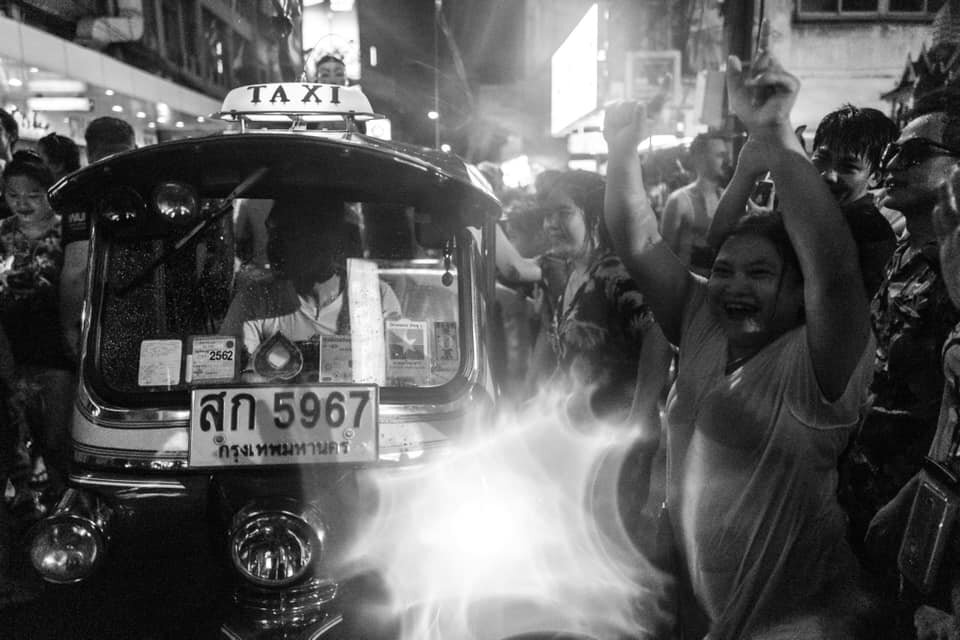
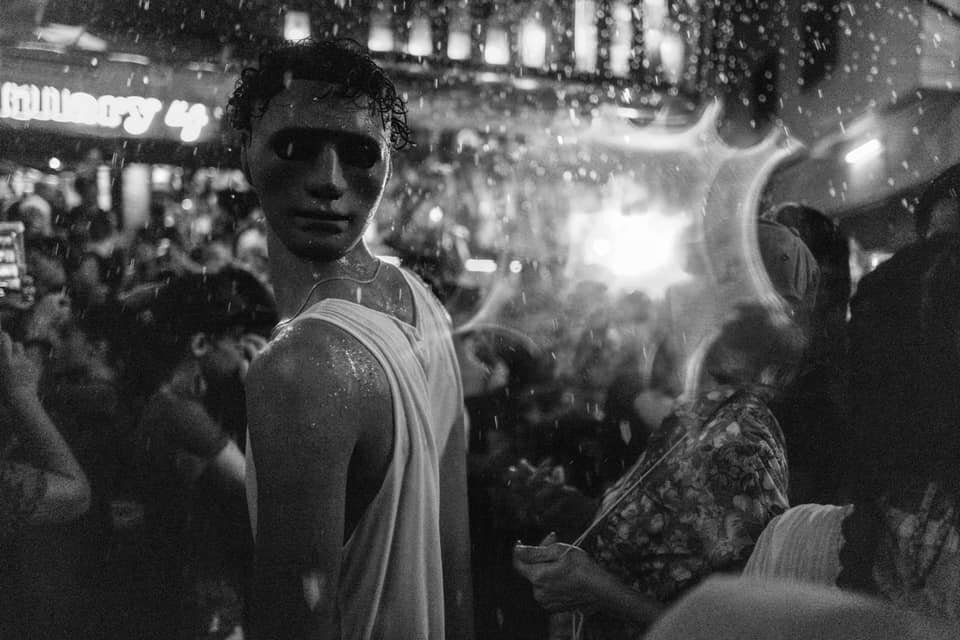
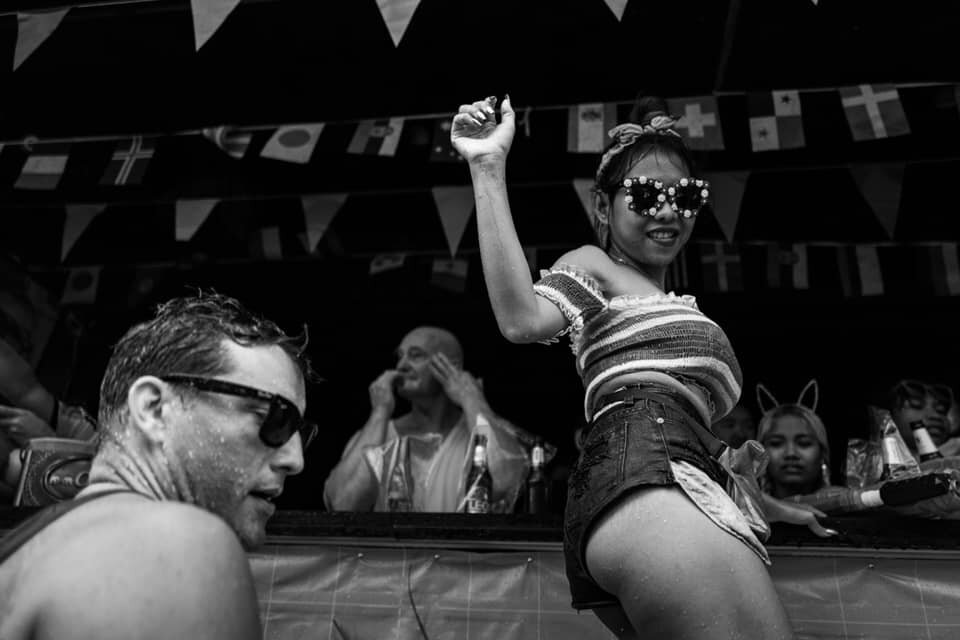

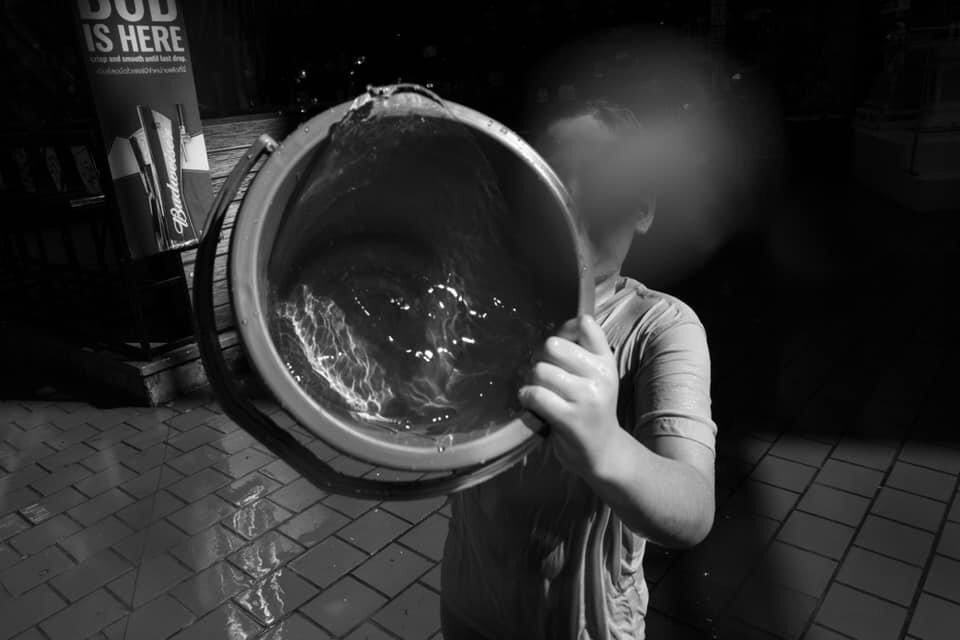


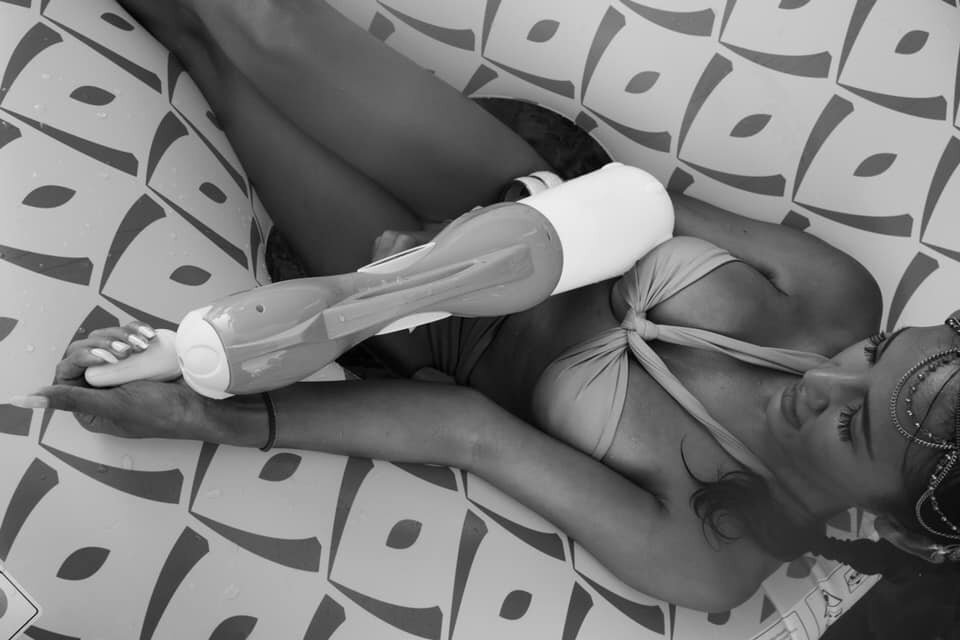

Video
The Q2 isn’t a professional video option in the portable segment like many may hope. While it now has 4K and 1080/120p capture for slow-motion, there is no manual exposure option (critical for professional looking video). It also negates the ability to plug in a microphone or headphone, clearly showing it’s designed for the occasional auto video recording for amateurs. I didn’t test this feature, but upon my short time playing with it, it was adequate for snapping occasional video clips.
To activate video, you now need to press the center button on the back controller as the dedicated red record button from the original Q has been removed. This took me a moment to work out but after a while I preferred it, as it’s not something a majority of Q users are likely to use often, so I prefer it being tucked away like it is now.
ISO Sensitivity
The Q2’s base ISO has been upgraded to 50 from 100, and goes up to 50,000, though I suggest stopping at 12,500 if you wish to retain good dynamic range and detail.
Image Quality
Now this is where the Leica Q2 really shines. There may be cameras with faster buffers, better AF tracking or more gimmicky features, but what the Leica Q2 does best is deliver amazing image quality, and this is exactly what people expect from this historic brand. I’ll keep this part very simple. The pictures look almost identical to the ones that come from the original Q, with improvements to the white balance, and that’s a great thing. The files have all the traits you would expect from a Leica camera, but where Leica really succeeds over other brands is in absolute sharpness and accurate out of camera colour. Put simply, getting great accurate colour is no easy task, and the Q2 does it with ease, in virtually any kind of lighting.
Leica Q2 at ISO 3,200 f/2 | 28mm
Leica Q2 at ISO 3,200 f/2 | 28mm
Leica Q2 at ISO 100 f/1.7 | 35mm crop mode
High ISO
Whether in colour or black and white the files that come from the Leica Q2 have all the Leica qualities we crave for. Another characteristic of the Leica Q2 files that is class-leading is in the way the files render noise, or lack there of. Noise is definitely prevalent at high ISO’s, but its the way it looks that really carries on the signature Leica look we’ve grown to love since the beginning of the 35mm format (yes, it was created by Leica). While it’s not exactly film, Leica users will see an obvious look and feel that’s carried over from film, yet with the precision and clean look of a modern day digital file. Not to mention the consistency of looking indistinguishable from pictures taken on the current Leica M and SL models. I was fortunate to be invited to my good friends’ wedding (Oak and Tub) and the Q2 performed well, providing fast and efficient operation and amazing results up to ISO 12,500.
Leica Q2 at ISO 1600 f/2.8 | 28mm
Leica Q2 at ISO 3200 f/2 | 28mm
Leica Q2 at ISO 12,500 f/1.7 | 28mm
Leica Q2 at ISO 1600 f/1.7 | 28mm
Areas of Improvement
No product is perfect and therefor the Q2 has some room for improvement. I have used the Q2 quite extensively now since its release, more so than the original Q. I’d say there is one particular feature that the camera is lacking, and I’d love to see Leica add it to it’s next model Q - that is the ‘AF lock’ feature. This is a feature that I use a lot in my professional work to lock focus and keep shooting action without the camera trying to refocus each time I hit the shutter button. One way around it is to switch to manual focus once the autofocus has been achieved, but this is counter-intuitive. Other than that, here is a small wish-list I made for the Q3.
Improved continuous focus: while the Q2’s continuous focus worked well enough, it leaves a lot of room for improvement in focus tracking of moving subjects at high speed. I was able to achieve a good hit rate of around 75%, but I’d like that to get closer to 90-95% if possible.
Articulating LCD: An articulating LCD would come in handy for obvious reasons, but it would also add bulk, weight and make the camera less durable too, especially when it comes to water resistance given today;’s level of technology.
Faster startup time: While I didn’t measure the startup time, it is much slower than I’d like, so a little more speed in this area would really be appreciated.
Buffer recording speed: This is the area where I’d like to see all Leica cameras improve, especially as file sizes have now been almost doubled.
Faster refresh rates for EVF in between shots: This is a problem with all electronic viewfinders and something that can deter potential users who are used to optical viewfinders. The Q2 improved on the original Q, but I’d like to see Leica improve it even more.
The best news is that all of these points have the potential to be improved with firmware, so I’ll keep my fingers crossed.
Conclusion
By now you may have seen many articles on this camera and I hope I haven’t bored you covering all the same things in the same way. I have chosen a more conversational approach to this article because it’s simply a successful successor to its predecessor - now that’s a mouthful!
The Q2 manages to improve in just about every important area of what made the original Q special, and Leica’s top-selling camera. It does everything right, doing the most important things better than any competitor in the market - delivering incredible image quality that has no peer by other 35mm camera brands; and it does it with simple, vintage, yet stylish looks that is simply hard to fault. Leica have achieved this by sticking to the Q’s original design goals and improving everything that made it great to begin with. This may sound easy to do, but you’d be amazed at how many companies just don’t get this part right.
Since the original Q’s entrance into the market, there has been chatter about it surpassing the legendary Leica M due to popularity alone. While it has the luxury of sporting the newest most powerful engine, it is still very much a toy compared to the much more robust and professional M10 and M10-P cameras. Yes, it does have the largest output of 47MP….well did have until the SL2 hit the scene recently, and while it may be the most saught-after camera for its versatility, its no replacement for the German company’s flagship workhorse.
Being the old-school photographer I am, I feel more comfortable with the Leica M. Nostalgia aside, there is nothing that matches the experience of shooting with a rangefinder focusing system, and combined with all the incredible lens options Leica has created since the 1950’s, its my portable camera of choice. The Q2 delivers where it’s supposed to, and while many comparisons to the Leica M are well-founded, the experience of shooting with the Q and M leave me wanting both, for different reasons, and more importantly, different situations. I’ll leave you with that last thought ;-)
Thank you and please enjoy the slideshow video below. KD


